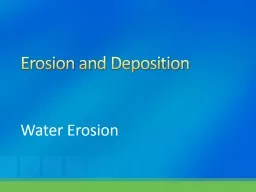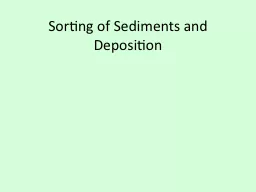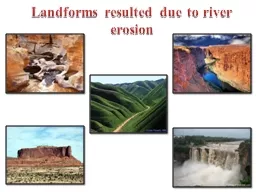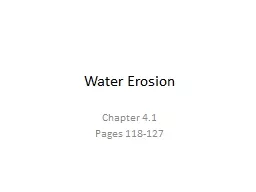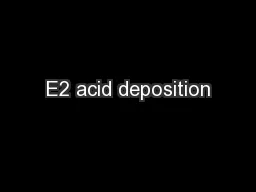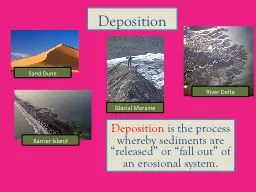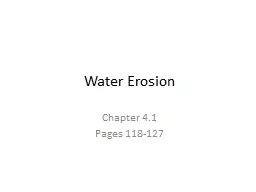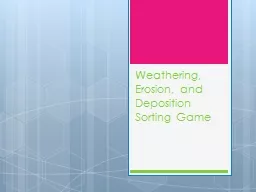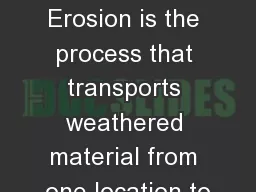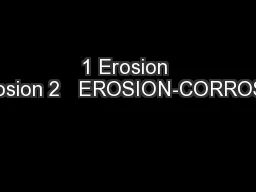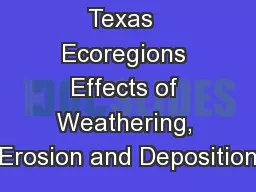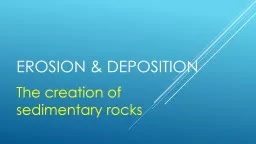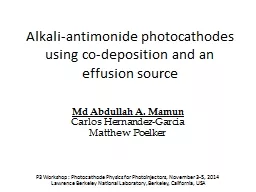PPT-Erosion and Deposition
Author : myesha-ticknor | Published Date : 2016-10-29
Water Erosion How Does Moving Water Cause Erosion Erosion by water begins with a splash of rain Some rainfall sinks into the ground Some evaporates or is taken up
Presentation Embed Code
Download Presentation
Download Presentation The PPT/PDF document "Erosion and Deposition" is the property of its rightful owner. Permission is granted to download and print the materials on this website for personal, non-commercial use only, and to display it on your personal computer provided you do not modify the materials and that you retain all copyright notices contained in the materials. By downloading content from our website, you accept the terms of this agreement.
Erosion and Deposition: Transcript
Download Rules Of Document
"Erosion and Deposition"The content belongs to its owner. You may download and print it for personal use, without modification, and keep all copyright notices. By downloading, you agree to these terms.
Related Documents

